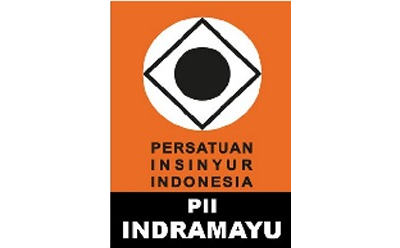INVESTIGASI KUALITAS UDARA RUANG PERKULIAHAN DI KOTA BANDUNG MENGGUNAKAN VENTILASI PASIF
Abstract
Indoor air quality has become a critical concern due to its significant impact on human health, as 80%-90% of human activities are conducted indoorsThis study aims to assess the air quality in a university classroom in Bandung City that utilizes passive ventilation, focusing on CO₂ concentration, temperature, and humidity parameters. A quantitative approach involving observational and experimental methods was employed by varying the opening levels of passive ventilation into three conditions: fully open, half-open, and fully closed. The results indicate that fully open ventilation effectively maintains good air quality with stable CO₂ concentration, temperature, and humidity. Conversely, under fully closed ventilation conditions, there is a significant increase in CO₂ concentration, temperature, and humidity, which can reduce comfort and pose health risks.The findings emphasize the importance of managing passive ventilation to ensure a healthy and comfortable classroom environment.
Full Text:
PDFReferences
Andamon MM, Rajagopalan P, Woo J. (2023). Evaluation of ventilation in Australian school classrooms using long-term indoor CO2 concentration measurements. Building and Environment, 237. Available from : https://doi.org/10.1016/j.buildenv.2023.110313
Asif A, Zeeshan M. (2020). Indoor Temperature, Relative Humidity and CO2 Monitoring and Air Exchange Rate Simulation Utilizing System Dynamics Tools for Naturally Ventilated Classrooms. Building and Environment, 180. Available from : https://doi.org/10.1016/j.buildenv.2020.106980
Bebhe K, Purwanto LMF. (2023). Upaya Penanganan Asap Melalui Sirkulasi Karbon Dioksida Menggunakan CFD pada Tungku Perapian pada Rumah Adat Bajawa-Ngada. Gewang, 5(1): 14-21. Available from : https://ejurnal.undana.ac.id/index.php/gewang/article/view/9602
Cahyono T. (2017).) Penyehatan Udara. Yogyakarta: Andi.
Candrasari CR, Mukono J. (2013). Hubungan Kualitas Udara Dalam Ruang dengan Keluhan Penghuni Lembaga Permasyarakatan Kelas IIA Kabupaten Sidoarjo. Jurnal Kesehatan Lingkungan, 7 (1): 21-25. Available from : ISSN 1829-7285
Heracleous C, Michael A. (2019). Experimental Assessment of The Impact of Natural Ventilation on Indoor Air Quality and Thermal Comfort Conditions of Educational Buildings in The Eastern Mediterranean Region During the Heating Period. Journal of Building Engineering, 26. Available from : https://doi.org/10.1016/j.jobe.2019.100917
Hildebrandt S, Kubota T, Sani HA, & Surahman U. (2019). Indoor Air Quality and Health in Newly Constructed Apartments in Developing Countries: A Case Study of Surabaya, Indonesia. Atmosphere, 10 (4): 182. Available from: https://doi.org/10.3390/atmos10040182
Lu C, Deng Q, Li Y, Sundell J, Norbäck D. (2016). Outdoor Air Pollution, Meteorological Conditions and Indoor Factors in Dwellings in Relation to Sick Building Syndrome (SBS) Among Adults in China. Science of The Total Environment, 560-561: 186-196. Available from https://doi.org/10.1016/j.scitotenv.2016.04.033
Kementerian Kesehatan Republik Indonesia. (2023) Peraturan Menteri Kesehatan Republik Indonesis No. 2 Tahun 2023 tentang Peraturan Pelaksanaan Peraturan Pemerintah No. 66 Tahun 2014 tentang Kesehatan Lingkungan. Berita Negara Republik Indonesia No, 5. Jakarta.
Kencasari RAV, Surahman U, Permana AY, Nugraha HD. (2020). Kondisi Kualitas Udara di Dalam Ruangan Pemukiman Non-Kumuh Kota Bandung. Jurnal Arsitektur Zonasi, 3(3): 335-345. Available from : http://doi.org/10.17509/jaz.v3i3.28134
Mahyuddin N, Awbi HB. (2012). A Review of CO2 Measurement Procedures in Ventilation Research. International Journal of Ventilation, 10 (4): 353-370. Available from : https://doi.org/10.1080/14733315.2012.11683961
Meiss A, Jimeno-Merino H, Poza-Casado I, Llorente-Alvarez A, Padilla-Marcos MA.(2021). Indoor Air Quality in Naturally Ventilated Classroom. Lesson Learned from a Case Study in a COVID-19 Scenario. Sustainability, 13: 8446. Available from : https://doi.org/10.3390/su13158446
Mutmainnah N, Larosa E, H Zainudin S. (2023). Evaluasi Kualitas Udara pada Ruang Kelas di Sekolah Sekitar Kawasan Pabrik Semen Tonasa. LINEARS, 6 (1): 48-55. Available from: https://doi.org/10.26618/j-linears.v6i1.10476
Mutmainnah N, Mulyadi R, Hamzah B. (2019). Air Quality Characteristics in Junior High School Classroom with Natural Ventilation in Pangkep Regency. EPI International Journal of Engineering, 2 (3): 157-161. Available from: https://doi.org/10.25042/epi-ije.082019.11
Pemerintah Indonesia. (2021). Peraturan Pemerintah No. 22 Tahun 2021 tentang Penyelenggaraan Perlindungan dan Pengelolaan Lingkungan Hidup. Jakarta.
Ritchie H, Roser M. Indoor Air Pollution – Our World in Data. (2022) [diakses pada 21 Februari 2024]. Available from : https://ourworldindata.org/indoor-air-pollution
Siburian S. (2020). Pencemaran Udara dan Emisi Gas Rumah Kaca. Jakarta: Kreasi Cendekia Pustaka.
Sun Y, Wang P, Zhang Q, Ma H, Hou J, Kong X. (2015). Indoor Air Pollution and Human Perception in Public Buildings in Tianjin, China. Procedia Engineering, 121: 552-557. Available from : https://doi.org/10.1016/j.proeng.2015.08.1032
Stabile L, Dell’Isola M, Frattolillo A, Massimo A, Russi A. (2016). Effect of Natural Ventilation and Manual Airing on Indoor Air Quality in Naturally Ventilated Italian Classroom. Building and Environment, 98: 180-189. Available from : https://doi.org/10.1016/j.buildenv.2016.01.009
Talarosha B. (2017) Jendela dan Dampaknya terhadap Konsentrasi CO2 di dalam Ruangan Kelas, Kajian Literatur. Jurnal Lingkungan Binaan Indonesia, 188-195. Available from: https://doi.org/10.32315/jlbi.7.1.46
DOI: https://doi.org/10.31884/jtt.v11i2.775
Refbacks
- There are currently no refbacks.
Copyright (c) 2025 JTT (Jurnal Teknologi Terapan)
 Creative Common Attribution-ShareAlike 4.0 International (CC BY-SA 4.0)
Creative Common Attribution-ShareAlike 4.0 International (CC BY-SA 4.0)













